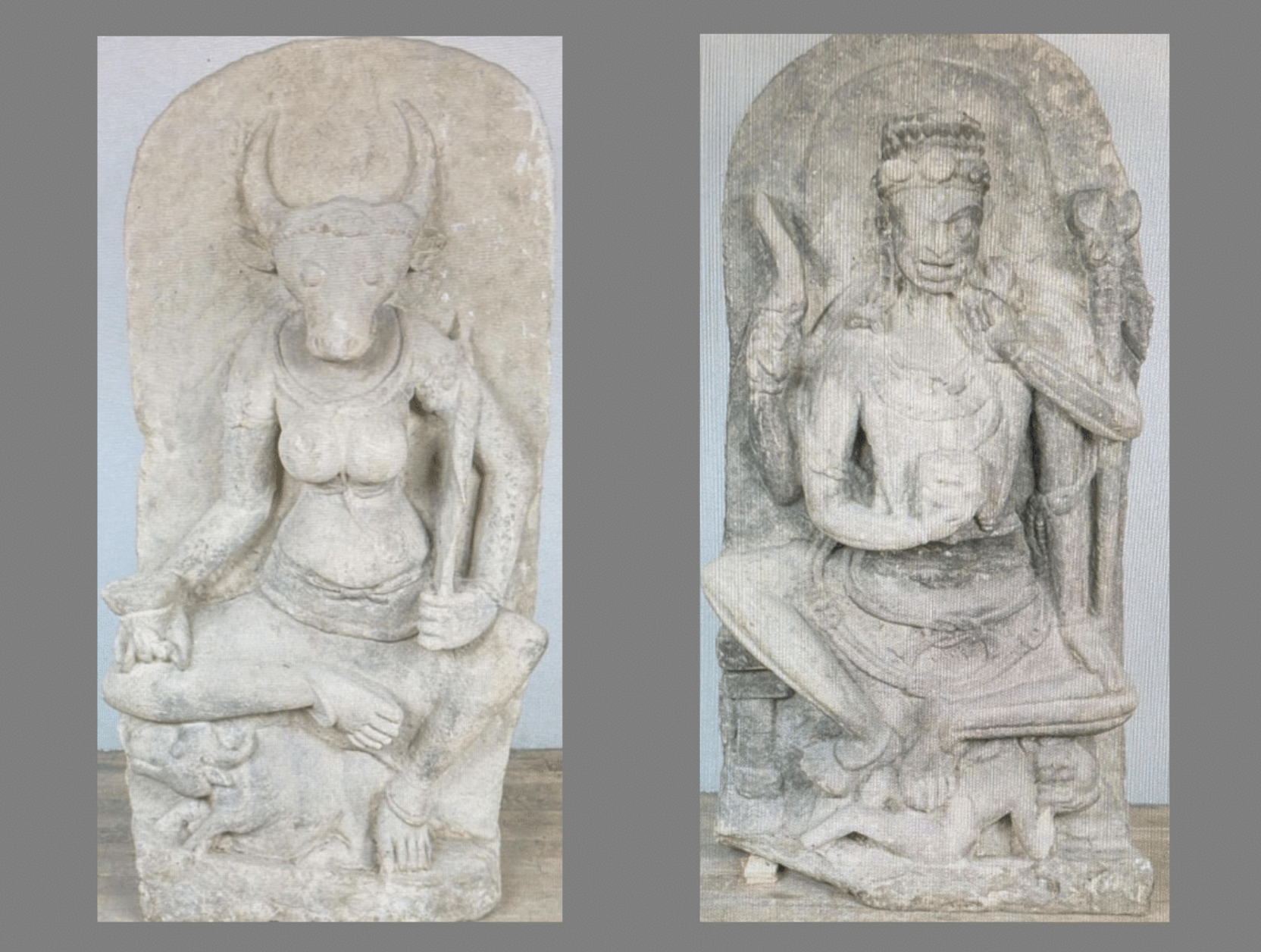
Two 10th-century stone idols that were stolen from a temple in India have been recovered from an English woman’s garden shed. They will be formally returned to the Indian government during a special handover ceremony at the High Commission of India in London on August 15, which is India’s Independence Day.
The sculptures represent Yogini Camunda and Yogini Gomukhi, two female deities that were looted sometime between 1979 and 1982 from a temple in the village of Lokhari, in the northern state of Uttar Pradesh. They were likely taken by an illegal smuggling network operating out of Rajasthan and Mumbai, according to the Times of India, and were easy to steal as these kinds of idols are not traditionally locked up.
The pair of yoginis were recovered in March after an English woman sold the contents of her garden shed wholesale to a salvage company, which had initially planned to sell the statues but first decided to investigate their provenance. They were soon referred to Chris Marinello, an American lawyer who founded Art Recovery International in London in 2013 in order to help locate stolen art.
Page from Yogini Cult and Temples: A Tantric Tradition by Vidya Dehejia recording the two yoginis as decorations on a temple in Lokhari, India. Photo courtesy of Art Recovery International.
Marinello collaborated with S Vijay Kumar, co-founder of the India Pride Project, who was able to identify the two yoginis. They matched images that recorded them at the Lokhari temple in Yogini Cult and Temples: A Tantric Tradition by Vidya Dehejia, a survey of these sacred objects that generally represent female divinities and are associated with Tantric worship. They are usually worshipped as part of one large group, most often of 64 yoginis.
“The Lokhari temple lies in ruins, with just a few broken yoginis now,” Kumar of India Pride Project told the Times of India. “Each yogini has specific rituals associated with them. They are not practiced much nowadays as so many yoginis have vanished, so these ones are the last remnants of a particular form of esoteric worship. If the site were to become secure, it would be a major tourist site and the whole village could prosper.”
Luckily, the pair may soon be reunited with members of their original group. In 2021, another goat-headed idol was found in another English woman’s garden while she was preparing to sell her house. Another ram-headed yogini from the same temple was also found in Paris in 2013. Both are now in the National Museum in New Delhi, which is where the two latest finds are also likely to end up.
“It is plausible that the original possessors became aware that these were looted once they tried to sell them,” Christopher Marinello told Artnet News, mentioning that this had been the case for the yogini that surfaced in 2021. “Rather than cooperate in returning them, they could have simply tried to hide them away to avoid legal issues.”
He also commended the due diligence of the salvage company. “Some dealers don’t want the headaches and that is just wrong. The salvage company in this case was an upstanding member of the art community who was willing to put morality above profit-making.”
More Trending Stories:
An Israeli First-Grader Stumbled on a 3,500-Year-Old Egyptian Amulet on a School Trip